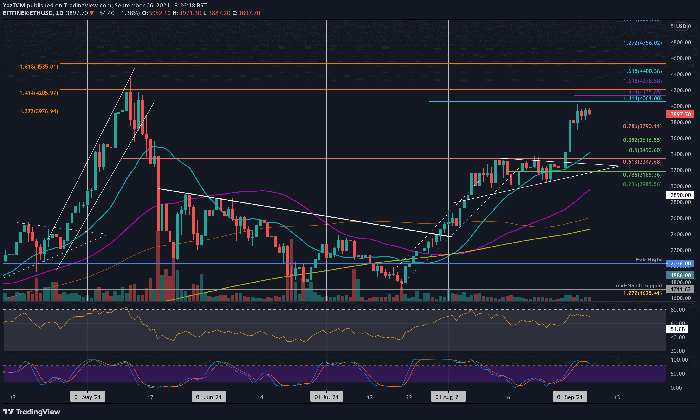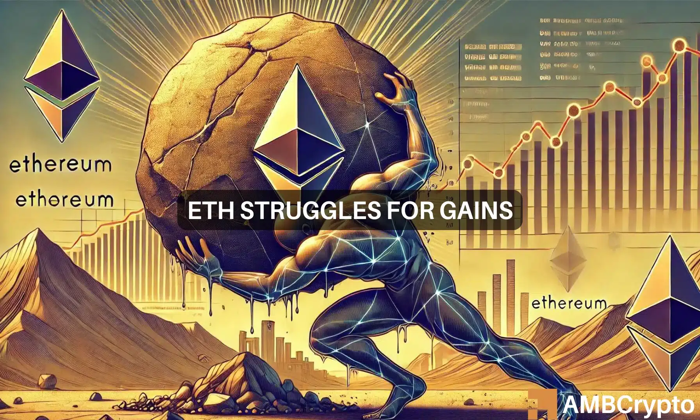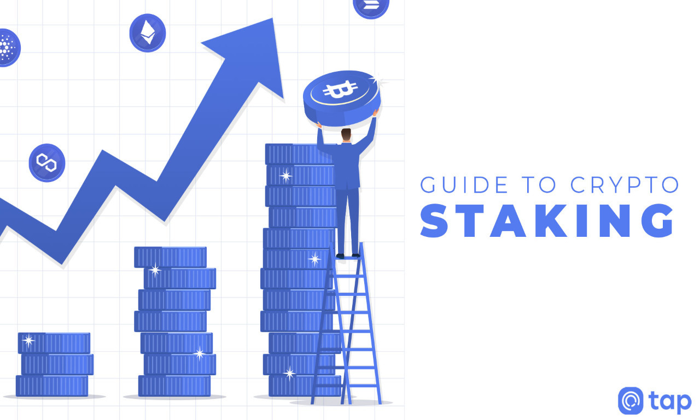The financial damages from LIBRA Coin have been starkly revealed in a recent Nansen report, highlighting the catastrophic fallout for many investors. According to the analysis, a staggering 86% of traders who engaged with this cryptocurrency incurred losses totaling around $251 million. The hype surrounding LIBRA, initially fueled by a prominent endorsement from Argentine President Javier Milei, quickly turned into a nightmare as the token’s value plummeted. Despite a fleeting moment of success where a select few profited significantly, the majority were left grappling with substantial cryptocurrency losses. This LIBRA market collapse serves as a cautionary tale in the volatile world of meme token trading, emphasizing the risks associated with speculative investments in the cryptocurrency space.
In the aftermath of the LIBRA debacle, the financial repercussions have resonated deeply within the trading community. This controversial digital asset, which initially appeared to be a beacon of hope for small businesses in Latin America, ultimately spiraled into a significant market downturn. The Nansen report has shed light on the broader implications of this incident, revealing the extent of the losses for the overwhelming majority of investors. With only a handful of individuals managing to profit amid the chaos, the situation underscores the inherent dangers of engaging with high-risk assets like meme coins. As the dust settles on this cryptocurrency saga, it highlights the critical need for thorough analysis and cautious participation in the ever-evolving landscape of digital currencies.
The Financial Fallout of LIBRA Coin
The financial damages from the LIBRA Coin fiasco have been starkly illustrated in the recent Nansen report. With 86% of investors suffering significant losses, it’s clear that the volatility associated with this meme token has had dire consequences. The report highlights that the collective loss amounts to a staggering $251 million, showcasing the risks that come with investing in unregulated cryptocurrencies. The sharp decline in LIBRA’s value post-launch not only affected individual traders but also raised concerns about the integrity of the cryptocurrency market as a whole.
The aftermath of LIBRA’s collapse serves as a cautionary tale for both novice and seasoned investors. As the cryptocurrency landscape continues to evolve, the potential for financial damages remains ever-present, particularly in the realm of meme token trading. The Nansen report emphasizes the importance of thorough research and risk management, as many investors who entered the market without adequate knowledge were left with substantial losses. The impact of LIBRA’s downfall extends beyond financial figures; it has also sparked discussions around regulatory oversight and the need for greater transparency in the cryptocurrency space.
Analyzing the Nansen Report on LIBRA Coin
The Nansen report on LIBRA Coin provides a comprehensive analysis of the token’s rise and fall in the cryptocurrency market. It meticulously breaks down the trading activities surrounding LIBRA, revealing that only a small fraction of wallets, approximately 2,101, managed to turn a profit. This disparity in outcomes underscores the unpredictable nature of cryptocurrency investments, especially during periods of extreme volatility. Moreover, the report highlights the involvement of experienced traders and automated bots, who capitalized on the market dynamics while many retail investors faced significant losses.
Additionally, the report sheds light on the role of social media in influencing cryptocurrency trends, particularly in the case of LIBRA. The initial endorsement from Argentine President Javier Milei generated a surge in interest, driving the token’s market cap to $4.5 billion. However, the subsequent disavowal from Milei and the revelation of LIBRA’s classification as a meme token contributed to its rapid decline. This analysis not only illustrates the financial damages incurred by investors but also emphasizes the need for cautious engagement with social media endorsements in the cryptocurrency realm.
The Role of Meme Tokens in Cryptocurrency Trading
Meme tokens have become an intriguing facet of the cryptocurrency market, often characterized by their speculative nature and rapid price movements. The rise of LIBRA Coin exemplifies how these tokens can attract significant attention and investment, only to experience dramatic volatility shortly thereafter. Investors tend to be drawn to the hype surrounding meme tokens, often overlooking the associated risks. This phenomenon has led to considerable financial damages for many, as evidenced by the Nansen report, which indicates that a vast majority of LIBRA investors ended up with losses.
The trading dynamics of meme tokens like LIBRA highlight the challenges faced by investors who may not fully understand the market mechanics. Many traders enter the market hoping to capitalize on short-term gains, but the reality is that these assets can lead to devastating financial consequences. The Nansen report serves as a reminder that while the allure of meme tokens can be strong, the potential for significant losses is equally real. Investors must approach these opportunities with caution and a clear understanding of the market’s volatility.
Insider Trading Allegations and LIBRA Coin
The LIBRA Coin situation has not only raised concerns about financial damages but also sparked allegations of insider trading. With blockchain analytics firms uncovering evidence linking LIBRA’s creators to other tokens like MELANIA, questions about market manipulation have emerged. Such allegations can further erode investor confidence in the cryptocurrency market, as the perception of unfair advantages for certain traders can deter potential new entrants. The Nansen report’s findings add fuel to these concerns, illustrating how a select few individuals managed to profit while the majority faced significant losses.
These insider trading allegations highlight a critical aspect of the cryptocurrency landscape: the need for stringent regulatory measures. Without proper oversight, the risk of manipulation remains high, particularly in markets dominated by speculative trading and meme tokens. The LIBRA Coin fiasco serves as a case study for the potential consequences of unregulated trading environments, emphasizing the importance of transparency and accountability in the cryptocurrency space. As the market matures, addressing these issues will be vital to restoring trust among investors.
The Future of LIBRA Coin and Cryptocurrency Regulation
Looking ahead, the future of LIBRA Coin remains uncertain, particularly in light of its tumultuous launch and subsequent collapse. The Nansen report indicates that a significant proportion of holders are currently facing unrealized losses, raising questions about the long-term viability of the token. As the cryptocurrency market continues to evolve, it will be crucial for investors to stay informed about regulatory developments that could impact their investments. The fallout from LIBRA highlights the need for a more robust regulatory framework to protect investors and ensure market stability.
Regulation could play a pivotal role in shaping the future of not only LIBRA Coin but also the broader cryptocurrency landscape. By establishing clear guidelines and oversight, regulators can help mitigate the risks associated with meme tokens and other speculative assets. This, in turn, could foster a more sustainable environment for innovation and investment within the cryptocurrency sector. As the industry grapples with the lessons learned from LIBRA’s rise and fall, the push for regulatory clarity will likely become a central theme in discussions about the future of digital currencies.
Lessons Learned from the LIBRA Coin Collapse
The LIBRA Coin saga offers several valuable lessons for investors navigating the cryptocurrency landscape. One of the most significant takeaways is the importance of conducting thorough research before investing in any digital asset. The Nansen report highlights how a majority of investors were caught off guard by the token’s volatility and subsequent collapse, leading to substantial financial damages. Understanding the underlying principles of cryptocurrency and market dynamics can help investors make more informed decisions and avoid similar pitfalls in the future.
Additionally, the LIBRA incident underscores the necessity of risk management in cryptocurrency trading. Investors should be aware of their risk tolerance and set clear limits on their investments to protect themselves from sudden market downturns. The Nansen report reveals that while a select few profited from LIBRA’s volatility, many others faced devastating losses. By adopting a more cautious approach and diversifying their portfolios, investors can mitigate potential risks associated with meme tokens and other speculative investments.
The Impact of Social Media on Cryptocurrency Trends
The influence of social media on cryptocurrency trends cannot be overstated, as evidenced by the rapid rise and fall of LIBRA Coin. The initial endorsement by President Javier Milei sparked a wave of interest, leading to an explosive market cap increase within a short period. However, the subsequent backlash and the president’s retraction of support illustrate how quickly public sentiment can shift, impacting market performance. The Nansen report highlights the critical role that social media plays in shaping investor behavior and market dynamics in the cryptocurrency space.
In light of these developments, it is essential for investors to approach social media endorsements with a healthy degree of skepticism. While platforms like X can drive short-term trading opportunities, they can also lead to significant financial losses if the hype dissipates. The LIBRA Coin experience serves as a reminder that investing based on social media trends can be precarious. By prioritizing fundamental analysis over hype-driven narratives, investors can make more strategic decisions and safeguard their investments.
The Role of Automated Trading in LIBRA Coin’s Volatility
Automated trading systems and bots played a significant role in the volatility surrounding LIBRA Coin. According to the Nansen report, some savvy traders utilized automated strategies to buy and sell LIBRA within minutes, securing substantial profits while leaving retail investors to bear the brunt of the losses. This highlights the growing influence of technology in cryptocurrency trading, where speed and efficiency can create a stark divide between experienced traders and the average investor. The ability to execute trades at lightning speed can lead to significant advantages, particularly in a highly volatile environment.
However, the rise of automated trading also raises ethical questions about market fairness. If a small group of traders can leverage advanced technology to outmaneuver the majority, it can create an uneven playing field. The LIBRA Coin fiasco underscores the potential consequences of this disparity, as many retail investors faced financial damages while a select few profited. Moving forward, it will be vital for the cryptocurrency community to address these issues, ensuring that all participants have access to fair trading opportunities regardless of their technological resources.
Conclusion: Navigating the Risks of Cryptocurrency Investment
In conclusion, the financial damages from the LIBRA Coin collapse serve as a stark reminder of the risks associated with cryptocurrency investment. As the Nansen report illustrates, the majority of investors faced substantial losses, while a select few managed to profit amid the chaos. This situation emphasizes the importance of due diligence and risk management when engaging with digital assets. Investors must be prepared for the inherent volatility and unpredictability that characterize the cryptocurrency market.
As the cryptocurrency landscape continues to evolve, it is crucial for investors to remain informed and adaptable. The lessons learned from the LIBRA Coin experience can guide future investment decisions, encouraging a more cautious and strategic approach. By prioritizing thorough research, understanding market dynamics, and recognizing the influence of external factors, investors can navigate the complexities of the cryptocurrency market with greater confidence and resilience.
Frequently Asked Questions
What are the financial damages linked to LIBRA Coin according to the Nansen report?
The Nansen report reveals that financial damages from LIBRA Coin were substantial, with 86% of investors losing approximately $251 million. Only a small fraction of wallets turned a profit amidst the cryptocurrency’s volatility.
How did the LIBRA Coin analysis by Nansen report on investor losses?
Nansen’s analysis indicates that the majority of LIBRA Coin investors faced significant losses, highlighting that only 2,101 wallets out of over 15,000 managed to profit, while the rest collectively lost $251 million.
What factors contributed to the LIBRA market collapse and financial damages?
The LIBRA market collapse was triggered by a rapid decline in value following Hayden Davis’s dismissal of the token as a meme coin, coupled with Argentine President Milei’s retraction of support, leading to massive financial damages for investors.
How did meme token trading impact financial damages related to LIBRA Coin?
Meme token trading significantly exacerbated the financial damages related to LIBRA Coin, as many investors were lured by hype and volatility, only to face a disastrous market collapse that resulted in $251 million in losses.
What insights does the Nansen report provide on cryptocurrency losses from LIBRA Coin?
The Nansen report provides insights that 86% of LIBRA Coin investors experienced cryptocurrency losses, totaling around $251 million, primarily due to its volatile nature and the misleading initial branding associated with the token.
Who were the biggest losers in the LIBRA Coin fiasco as revealed in the analysis?
The biggest losers in the LIBRA Coin fiasco included Barstool Sports founder Dave Portnoy, whose significant realized losses contributed to the overall $251 million in financial damages suffered by investors.
What role did insider trading play in the financial damages related to LIBRA Coin?
Insider trading may have played a role in the financial damages related to LIBRA Coin, as evidence suggests connections between the token’s creators and the MELANIA token, potentially influencing trading outcomes and losses.
Can you explain how only a few wallets profited from the LIBRA Coin analysis?
According to Nansen’s analysis, only 2,101 wallets profited from LIBRA Coin due to strategic trading by experienced investors and bots who exited the market before the collapse, contrasting sharply with the financial damages faced by retail investors.
What are the unrealized losses reported for LIBRA Coin holders after the market collapse?
Following the LIBRA Coin market collapse, over 1,000 wallets are still holding the token, facing unrealized losses of about $11 million, indicating ongoing financial damages despite potential recovery.
How did the hype around LIBRA Coin lead to financial damages for investors?
The initial hype around LIBRA Coin, fueled by endorsements and social media posts, misled many investors into buying at inflated prices, resulting in substantial financial damages when the market quickly collapsed.
| Key Point | Details |
|---|---|
| Total Losses | 86% of traders lost $251 million. |
| Winners vs. Losers | Only 2,101 wallets turned a profit; 15,000 wallets ended up losing. |
| Market Reaction | Initial hype due to endorsement by President Milei; rapid price drop followed. |
| Top Performers | Two wallets made at least $5.4 million in 43 minutes; one claimed $25 million. |
| Ongoing Trading | Despite losses, some traders continued trading LIBRA, leading to further volatility. |
| Unrealized Losses | Over 1,000 wallets still holding LIBRA with unrealized losses of $11 million. |
Summary
LIBRA Coin financial damages have been significant, with a staggering 86% of investors suffering from the aftermath of this cryptocurrency’s collapse. The Nansen report highlights the severe financial impact, revealing that while a few traders profited, the vast majority faced substantial losses. The initial excitement surrounding LIBRA quickly turned to disappointment as its value plummeted, leading to widespread financial damages among investors. This case serves as a cautionary tale about the volatility of meme coins and the risks involved in cryptocurrency investments.
The recent findings on LIBRA Coin financial damages reveal a staggering loss for the majority of its investors. According to a comprehensive Nansen report, around 86% of those who ventured into the LIBRA cryptocurrency market faced a collective loss of $251 million, highlighting the perilous nature of meme token trading. This analysis underscores the volatility surrounding LIBRA, which saw only a mere 2,101 wallets turning a profit amidst the chaos of its market collapse. The report also outlines the stark contrast between the fortunes of a select few who capitalized on the fluctuation and the overwhelming number of traders left in the red. As the LIBRA Coin saga unfolds, it serves as a cautionary tale about the risks inherent in cryptocurrency investments, especially with the emergence of trends like meme tokens that can lead to devastating financial damages.
In the wake of the LIBRA token’s tumultuous debut, the financial repercussions have sparked significant discussion about its impact on investors. Many have described LIBRA as a speculative asset, with a swift rise and fall that has left countless traders reeling from substantial cryptocurrency losses. This saga, characterized by its initial hype driven by political endorsements, quickly devolved into a narrative of financial despair for most, overshadowed by the select few who profited during the chaos. The Nansen report sheds light on the stark realities of the LIBRA market collapse, illuminating the contrasting experiences of those who entered the fray versus those who managed to navigate the volatility. As this situation continues to evolve, it remains a crucial case study in understanding the dynamics of modern cryptocurrency trading and the associated risks.















